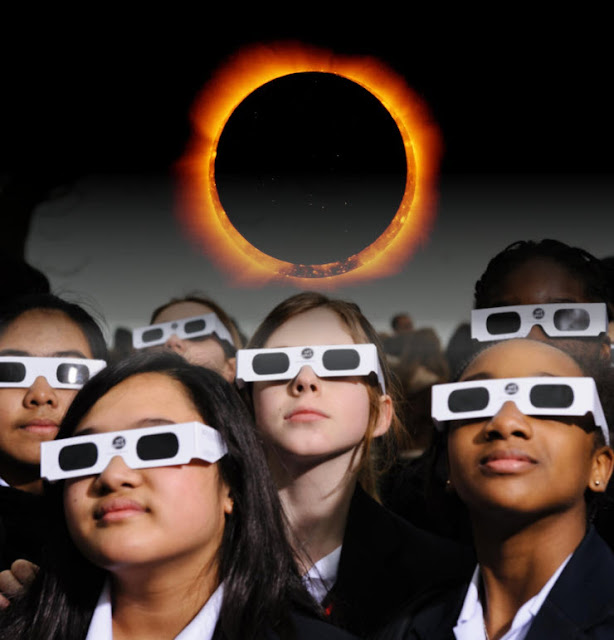The phenomenon of an annular solar eclipse will occur on June 10, 2021
Basically the ring of fire is part of a partial eclipse and requires eye protection to witness it. Seeing this celestial phenomenon unprotected will cause eye damage.
The annular sollar eclipse will last approximately 100 minutes, starting at sunrise in Ontario, Canada (on the north side of Lake Superior). Then the eclipse process across the northern part of the Earth.
On the way, the peak of the eclipse occurred at noon local in northern Greenland. After that, the path of the annular eclipse spans Earth's North Pole, ending at sunset in northeastern Siberia.
While the middle stage or 'ring of fire' (annular), will last a maximum of 3 minutes 51 seconds.
Outside of that path, a partial eclipse will be visible to people in different parts of the earth. That includes northern Canada and Alaska. While in the United States, the eclipse will be partially visible from the northern Midwest and along the East Coast (except Florida).
According to Earth Sky, Europeans could witness the partial eclipse from start to finish. That is, it will be noon on June 10.
For example, from Oslo, Norway, the eclipse will last for 2 hours 26 minutes, with the maximum magnitude of the eclipse just above 0.40.
While in Asia, a partial eclipse will occur in the afternoon on June 10. From Beijing, China, the eclipse will be visible about 12 minutes before sunset. The maximum eclipse magnitude of 0.08 (8%) will occur just at sunset June 10.
Countries in the region such as the United States and India could not see the event.
According to a Timeanddate.com report, the Ring Solar Eclipse will start at 13:42 IST or around 15:12 WIB. The event will be visible until 18:41 IST or 20:11 WIB.
For information, there are three types of solar eclipses, namely total, partial and ring. Every year, Earth can only see two types.
This year, the second solar eclipse will occur on December 4. At that time, people in the South America, Pacific, Atlantic, parts of the Indian Ocean and Antarctica.
This December solar eclipse will present a total solar eclipse. So the Moon will completely block the Sun and cast a shadow over the Earth.
This solar eclipse will occur shortly after the lunar eclipse on 26 May 2021 yesterday. Coinciding with Vesak Day, the Lunar Eclipse is visible in almost all regions in Indonesia.
NASA: CAUTION Don't look directly at the annular solar eclipse with the naked eye
Solar eclipse rings become a rare phenomenon that will occur on Thursday, June 10. However, NASA reminded residents not to see the phenomenon directly without tools such as eclipse glasses.
Unfortunately, this rare phenomenon on June cannot be seen from Indonesia. Regions that can see this phenomenon are the United States and Canada.
Reported by Express.co.uk, the US space agency NASA explained, it is never safe to look directly at the sun, especially if there is a solar eclipse.
"When watching a partial eclipse, you have to wear eclipse glasses or use an alternative indirect method," he said.
"This also applies during a total eclipse until the sun is completely covered," he added.
Eclipse best seen along a narrow stretch of northernmost Canada and Russia, with the partial eclipse visible from parts of the US.
According to the Maine Farmers' Almanac, the viewing zone will fall north and east of a line that runs from Edmonton, Alberta, Canada, to Evansville, Indiana, as well as near Savannah, Georgia, on the Atlantic coast.
Cities like Toronto in Canada and New York and Boston in the US will each see between 86 and 80 percent of the solar eclipse.
Astronomers at the Royal Observatory Greenwich estimate about 25 percent of the Sun will be covered over England.

